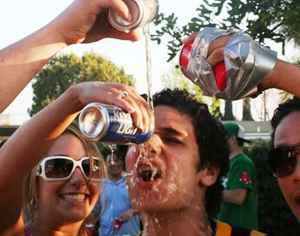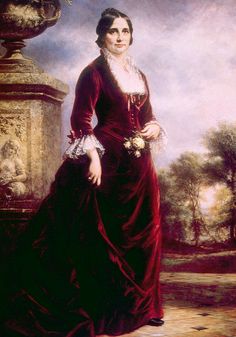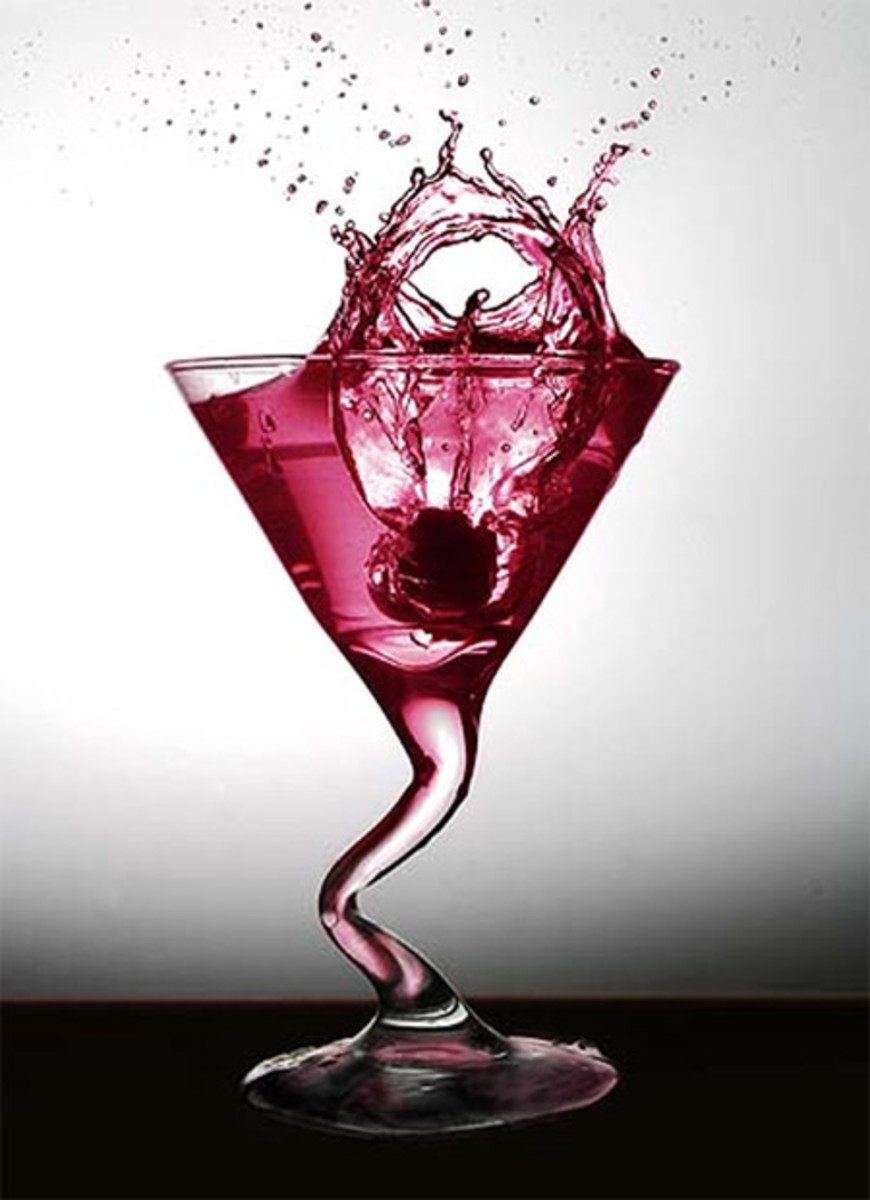Lucy Hayes' Tips for Campus Tipplers

Post-bender halitosis fills the room as a strained attempt to reconstruct events occupies the mind. The books beckon, the laptop lures and a meeting in the placement office awaits. They will have to wait: imbibing to the point of blindness and deafness erodes the productive capacity, requiring many hours of recovery. The only comfort is in shared suffering. As the groves of academe resound with debates on safe spaces, building names and transgender rest rooms, an existential threat to lives and futures smolders in dorms, fraternity houses and campus pubs. Whether rooted in the prospect of looming debt, the burden of academic requirements or the ubiquitous specter of loneliness, the sum total of binge drinkers—and the frequency of binging—has reached unprecedented levels at American colleges.
Although the average amount of campus drinking remains constant nationally, the upturn in collegiate bacchanalia is pronounced. The National Institute on Alcohol Abuse and Alcoholism defines binge drinking thusly:
Many college alcohol problems are related to binge drinking. Binge drinking is a pattern of drinking that brings blood alcohol concentration (BAC) levels to 0.08 g/dL. This typically occurs after 4 drinks for women and 5 drinks for men—in about 2 hours. Drinking this way can pose serious health and safety risks, including car crashes, drunk-driving arrests, sexual assaults, and injuries. Over the long term, frequent binge drinking can damage the liver and other organs.
Those risks are now being realized by young adults in higher education. Deaths related to alcohol use are up to 1,825 among collegians; assaults, around 696,000; and sexual assaults, about 97,000. Harder to gauge are declines in academic performance as binge drinkers are more likely than others to shirk class attendance and get sub-par results on tests and assignments. Furthermore, students transported to emergency rooms for alcohol poisoning number in the thousands annually. Administrators, faculty and student advocates are faced with a challenge that is both expanding and intensifying.
They are not, of course, burying their heads in the sand. Few college presidents, after all, do the peacock strut over a “top party school” designation. In fact, the last quarter-century has often been a blur of education campaigns, behavioral surveys, stepped-up enforcement and community partnerships. Still, millions of dollars and thousands of man hours later, the problem persists if not worsens. The New York Times reported in December of 2014 that university policy makers prefer “social norming,” i.e. convincing bingers that they party outside the mainstream of student culture, as the key to reducing binge drinking.
To little or no avail. But does it have to be that way? Moderating intake—or quitting altogether—has been done before. Often. No studies, penalties or policies required. There was once a way to counter dangerous indulgence and it did not cost a cent. OK, one cent. Rather than social science, would the well-meaning leaders do better to let history be their guide?
Beer, wine and hard cider have a storied connection with colonial America. The Puritan Cotton Mather spoke of alcohol as endowed from the Almighty and the largest expense of graduation ceremonies at Puritan Harvard College was beer. Spirits were actually part of soldiers’ rations in the Continental Army, and seen as necessary to sustain strength and vigor. Then things changed. The army’s Surgeon General, Benjamin Rush (signer of the Declaration of Independence), came to believe otherwise. A friend to Thomas Paine and Benjamin Franklin, Dr. Rush soon asserted the health benefits of potent potables like rum and whiskey were highly overrated, if not fabricated. He set forth his suspicions in a scientific paper called “Effects of Spiritous Liquors upon the Human Body and Mind,” earning for himself a reputation as one of the earliest temperance advocates.
Aside from the research of the respected Dr. Rush, another publication did much to portray alcohol in negative terms. Ten Nights in a Bar-Room and What I Saw There is an 1854 novel by T.S. Arthur that linked reprobate behavior in men to drinking as few had done before. Later made into a play and a musical, this work was a call to arms for women to maintain happy families by banishing alcohol. Most Americans equate the temperance movement with the forces that later brought Prohibition to the Constitution. Yet the years separating Dr. Rush’s medical warnings from Mr. Arthurs gripping narrative gave rise to a vibrant—and effective—advancement toward sobriety.
All done at the grass roots.
The 19th century saw an unprecedented mushrooming of alcoholism and unchecked drunkenness among the American working class. Men—overwhelmingly men—were getting hooked on hooch in record numbers and for myriad reasons. For one thing, the alcohol content in most spirits was by then off the charts. According to the Dictionary of the American Brewing and Distilling Industries, the estimated average intake of pure alcohol (200 proof, or 100 percent alcohol by volume) by adults in 1825 was seven gallons. Given that most of that consumption was restricted to one sex, this average can be safely doubled for men. And the numbers get worse in succeeding years.
And then…
The next two decades saw precipitous reductions in drinking, largely due to the work of hundreds of home-grown temperance societies. Large and small, these organizations began vigorous publishing and speaking programs in every state. Central to their work was eliciting commitments to either moderate intake or swear off alcohol altogether, forcing drinkers to face their own Ghost of Christmas Future moments. Those opting for the latter were designated on society records with a capital “T” for total abstinence—giving rise to the term “teetotaler.” The early years of this movement—led by groups such as the Sons of Temperance, the American Temperance Society and the Independent Order of Good Templars—were, it turns out, tremendously successful in keeping men from descending into full-blown alcoholism. While laws were enacted against liquor in some states and localities, the primary means used by the movement was moral suasion.
As the Civil War approached, many temperance advocates were sidelined by an issue even more near and dear: abolition. Because of this, their momentum toward national sobriety was stalled. Yet an entire generation of social reformers was born out of the movement, among them Lucy Webb Hayes.
Temperance was the centerpiece of a wide array of social justice movements that sprang up in America in the early 1800s, largely as a result of the Second Great Awakening. Devotees of this religious revival were zealous about God but their passion did not stop there. Abolition, women’s suffrage, the treatment of Native Americans, diet, apparel and compassion toward the mentally ill were all enthusiasms shared by these abstemious activists. As they saw them, these issues were all inter-connected and none could be properly addressed until drunks stopped drinking.
Losing her father to cholera at the tender age of two, Lucy Webb came to view her grandfather, Isaac Cook, as her mentor and role model. A local politician and man of influence, Cook experienced a profound religious conversion and became an ardent Methodist. Lucy’s biographer, Emily Apt Greer, recalls:
Isaac Cook impressed upon his family, including young Lucy, who adored him, the importance of temperance. Like his other grandchildren, she signed the abstinence pledge.
…a pledge she kept her entire life. Not only did she model temperance, she convinced others—her husband included—that the idea of not drinking was not so far-fetched. In his early adulthood, Rutherford B. Hayes, a Harvard Law student, mockingly chided his beloved sister, Fanny:
Well, I was some astonished to hear you had become temperate, but to hear of your believing in such a humbug is quite amusing, quite, I assure you.
Striking how his snarky tone left him when he joined the Sons of Temperance in 1848, pledging moderation in his intake. Striking more how he bragged of his Civil War unit—the 23rd Ohio Volunteers—as “strictly a temperance camp.” Temperance meetings did something to the future president, who never gave evidence of drunkenness yet grew to see abstinence as a healthier lifestyle. Like Hayes’ vivacious sister, Lucy broke his stereotypes of temperance women as scowling killjoys. A few facts about the woman known to historians as “Lemonade Lucy:”
- She was the first First Lady to have earned a college degree
- She was an ardent abolitionist who insisted that Fort Sumter never would have fallen if defended by women
- She made battlefield visits to her husband during the Civil War, with children often in tow, and attended to wounded soldiers
- As a governor’s wife, she visited prisons, reform schools, mental institutions and other facilities inhabited by the marginalized
- She was considered the most elegant White House hostess between Dolley Madison and Jacqueline Kennedy
Lucy Hayes, and many like her, made temperance winsome. She made it cool. True, she always wore a black dress and tied her raven hair in a bun, looking every bit the scold. Yet each day she adorned her hair with a flower of stunning hue, as if to tell the world that her spirit was joyful against the grave backdrop of the times.
How, then, did the temperance movement lose its mojo? What caused its advocates in the late 19th century to throw up their hands and resort to constitutional forbiddance? Perhaps the same impulses that move a hungry person to opt for a microwave over a slow cooker. Sure, the meat is dried out and less appetizing but it’s ready in minutes. Local meetings, close at hand, and the retail, door-to-door selling of sobriety made progress incrementally when many activists were eager for wholesale change. Lucy Hayes’ example setting was powerful but short-lived (by intention, President Hayes served only one term). Old-time temperance ceased to gratify.
Whatever the opinions about the Prohibition enacted in 1920, few disagree that it became an enforcement nightmare. Sadly, the practice of temperance itself became marred by these failures. Abstainers even today are tagged by critics as repressed, priggish and controlling. These belittlers need to spend some time with Lucy Hayes, a bright, gracious and adventurous woman who despised slavery—to plantation and to bottle. They need to study her and discard their comfortable templates. Maybe then people will find the courage of the old temperance keepers: the courage to confront, speaking the truth in love to campus bingers in danger of destroying their futures.
Yes, moralists can be insufferable but cowards are worse (and I’m speaking to myself here). It is time for college students to police their own. Maybe tuitions will not rise so fast if they can save money on ineffective and costly prevention programs.










